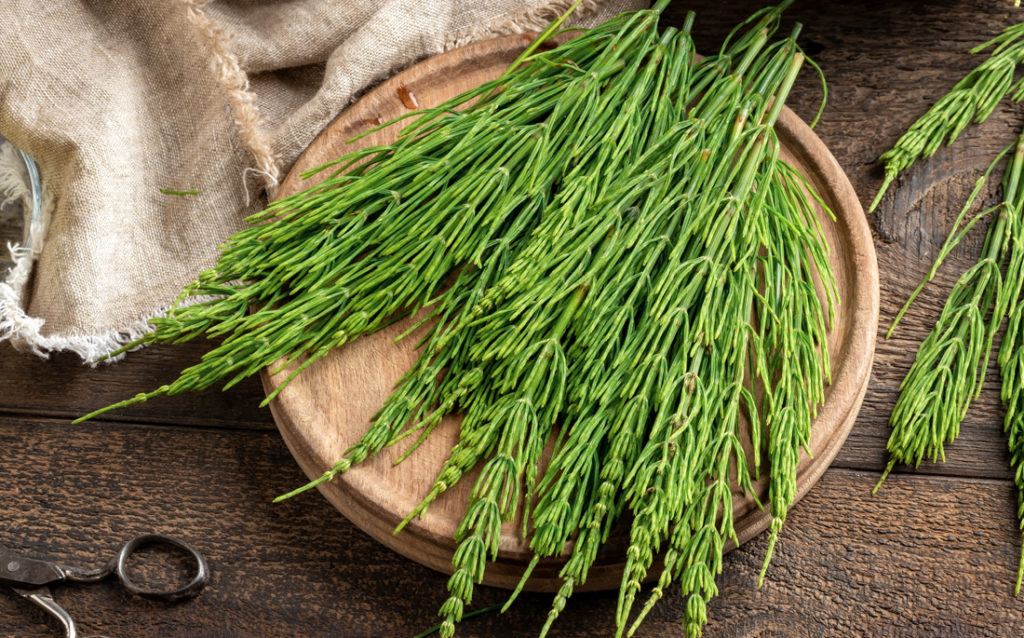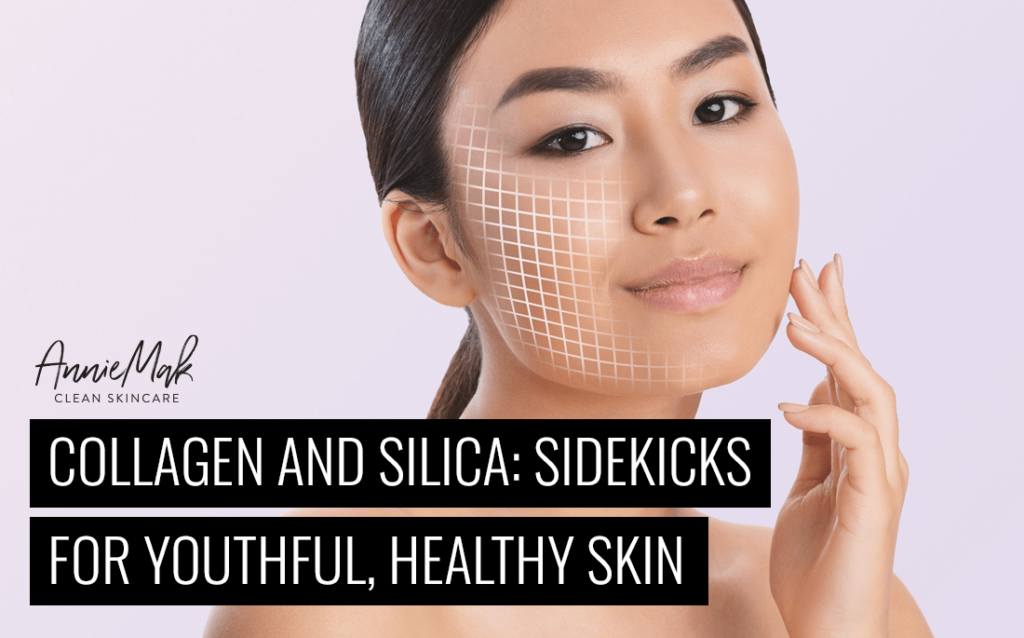Collagen is the most abundant form of protein found in the body. So, did you know that collagen acts like your body’s superhero when it comes to proteins? It’s everywhere – holding your skin together, keeping your gut in good shape, making sure your eyes are sparkly, and letting your hair and nails shine bright. It’s pretty much the backstage VIP that gives your teeth their bite and helps your heart and liver do their thing.
Here’s the kicker though – your body needs this sidekick named silica to make the magic happen. If you’re running low on silica, you might not be getting all that awesome collagen goodness. Curious about what you can do about it? Keep reading, and I’ll spill the beans!
Table of Contents
Collagen Production Declines with Age
Another unfortunate truth is that as we age, collagen production in the body begins to wain significantly. Those who eat the standard American diet (SAD) and are also living a typically stressed out, modern lifestyle will usually see levels of collagen going down significantly by age 30. Yeah, I said 30. But it starts after 20!
Not to mention the sagging skin, an increase in joint pain, digestive issues, and more that can come with reduced collagen production. No wonder we all start to dread aging in general. But knowledge is power and you’re getting some great knowledge now.
Lifestyle and dietary changes can help to turn all this around! In addition to supplementing with extra collagen, eating foods and taking herbs that naturally promote collagen production can help minimize signs of aging, such as those wicked wrinkles and in turn promote vibrant health.
Your Body Needs Silica to Help Create Collagen
You may already know that both vitamin C and zinc are necessary for collagen synthesis. But there is another substance the body needs for creating collagen – silica. Mother Nature has us covered though. Silica naturally occurs in many places in nature including many plant foods (e.g., bananas, oats, leafy green veggies, potatoes), rocks (e.g., quartz & sand), and plants such as horsetail. It is a common ingredient used in cosmetics, toothpaste, and, as mentioned above, medicine. But did you know that small amounts of silica are normally found in all body tissues? Fascinating, isn’t it?
Do Silica and Collagen Work Together?
As it turns out your body needs both silica and collagen. The body houses about 7 grams total of silica, most of which is contained in the skin, tendons, blood vessels, hair, and bones. Guess what? These are also places where collagen can be found, which makes sense since silica is essential for collagen production.
Friendly as ever, silica lends a helping hand by keeping “glycosaminoglycan” networks stable, and it also gives a little nudge to those hydrating enzymes that are working hard in whipping up collagen and elastin. Quite the teamwork.
Elastin is a highly elastic protein in connective tissue that helps it maintain its shape and “bounce back” after being stretched. Silica strengthens these substances and increases their potential for elasticity . More elasticity generally means fewer wrinkles and healthier skin, nails, hair, and overall vitality.
Unfortunately, as collagen production slows down with age, silica levels are also impacted. Signs of silica deficiency include:
- brittle nails
- wrinkles on the skin
- thinning hair
- weak bones
What Exactly Is “Horsetail” and How Does It Help Your Skin?
One of the ingredients in Organixx’s Clean Sourced Collagens is “Silica from Organic Horsetail.” But what is horsetail and why do we bother including it in our collagens supplement? I sure hope you’re ready to geek out with me here.
Just to be clear, as beautiful as they may be we’re NOT talking about the tail end of an equine. Horsetail is a perennial grass that grows in most parts of the world, including North America. It has hollow, jointed stems that look similar to asparagus with green, spiky offshoots that resemble (you guessed it) the feathery wisps of a horse’s tail. Thus, the common name.

Other names for horsetail are puzzle plant (due to the jointed stems) and scouring rush because of its coarse texture. And get this, certain species of horsetail have been used through the centuries for scouring and sanding pots, pans, and even coats of armor.
Like many types of grass, horsetail is one of the oldest plants on the planet. In fact, experts consider it a “living fossil” because it has been in existence for the last 400 million years.
While there are over 20 different species of horsetail, Equisetum arvensis is the type most used medicinally throughout history. The ancients Greeks and Romans used horsetail for a variety of ailments relating to bleeding, ulcers, tuberculosis, and treating bladder and kidney issues .
Horsetail is known for:
- promoting blood clotting (for wound healing)
- relieving canker sores
- clearing up eye infections such as conjunctivitis
- relieving menstrual cramping
- strengthening bones
- healing foot infections
- relieving nasal congestion, dysentery, inflammation, and hemorrhoids
- aluminum detoxification
- calming the symptoms of a flu
Horsetail is also used:
- as a poultice for boils and sores
- as a soak to strengthen nails
- as an aid to strengthen brittle hair
In addition to being used as a remedy for these various ailments, horsetail is one of the best natural plant sources of silica – a compound that is essential for collagen synthesis and healthy skin. Because of its deep roots, horsetail pulls the element silicon from the soil. When the plant is dried, silica crystals form on its stems.
So… Is Horsetail Safe To Use?
Horsetail is an excellent plant source of vital silica which is why AnnieMak includes a small amount of silica harvested from organic horsetail in our Organixx’s Clean Sourced Collagens blend.
But let’s talk about safety here. Horsetail as a stand-alone alone supplement should be used only under medical supervision. Going out and picking the plant in the wild is not advised as there are many different types of horsetail, some of which can be downright harmful. According to the website Drugs.com:
Horsetail has been listed as an herb of undefined safety by the US Food and Drug Administration (FDA). Horsetail remedies prepared from E. arvense are generally considered safe when used properly. However, another species of horsetail, E. palustre, is poisonous to horses; contraindicated for use in humans.
As always, we recommend consulting with a qualified healthcare practitioner before using horsetail or any new supplement, particularly if you have any existing health issues or are pregnant or breastfeeding.
So, if you’re thinking about giving collagen supplements a go, make sure to grab one that’s pure and packed with all the good stuff to really boost what the collagen can do for you. Organixx’s Clean Sourced Collagens are checked out by an independent third party to guarantee they’re non-GMO and totally free from yucky pesticides, herbicides, and any other nasty chemicals. Plus, it’s got silica from organic horsetail in there, which is a killer addition to make sure the five different types of collagen inside work their magic on making your skin, hair, and nails look amazing!
FAQ: Collagen, Silica, and Horsetail
Collagen is like the body’s superhero of proteins, responsible for a variety of functions including:
Maintaining skin elasticity
Supporting gut health
Keeping eyes clear and sparkly
Strengthening hair and nails
Giving teeth their structure
Assisting in cardiac and liver functions
Silica acts as a crucial sidekick to collagen synthesis. It aids by:
Encouraging the production of collagen and elastin enzymes
The presence of silica in the body enhances the elasticity of tissues, which helps maintain youthful skin and strengthens bones, hair, and nails.
Collagen production begins to decline after age 20 and significantly decreases by age 30. To combat this, one can:
Implement lifestyle and dietary changes to reduce stress and improve overall health.
Consume foods and herbs that naturally promote collagen production.
Consider supplementing with additional collagen, which may help minimize signs of aging.
If you’re deficient in silica, you might experience:
Brittle nails
Increased wrinkles
Thinning hair
Weaker bones
Horsetail is a perennial grass with deep roots, able to absorb silica from the soil, making it a potent natural source of this mineral. It’s included in the Organixx’s Clean Sourced Collagens for its benefits, which include:
Supporting collagen synthesis for healthier skin
Providing medicinal properties used for various ailments historically
Wrapping It Up!
Collagen is a necessary protein to maintain smooth, healthy skin – but as you age, your collagen production declines.
Without a substance called “silica” your body may not make as much collagen as it needs.
The human body houses about 7 grams total of silica, most of which is contained in the skin, tendons, blood vessels, hair, and bones.
Signs of silica deficiency include:
- brittle nails
- wrinkles on the skin
- thinning hair
- weak bones
Horsetail is a perennial grass that grows in most parts of the world, including North America.
Traditional cultures have used horsetail for a variety of ailments relating to bleeding, ulcers, bladder and kidney issues (and more) for centuries. The most common type of horsetail used medicinally is Equisetum arvensis.
Due to its deep roots, horsetail is one of the best natural plant sources of silica – a compound that is essential for collagen synthesis and healthy skin.
AnnieMak includes a small amount of silica from organic horsetail in the Clean Sourced Collagens by Organixx to enhance collagen synthesis.










Leave a Reply